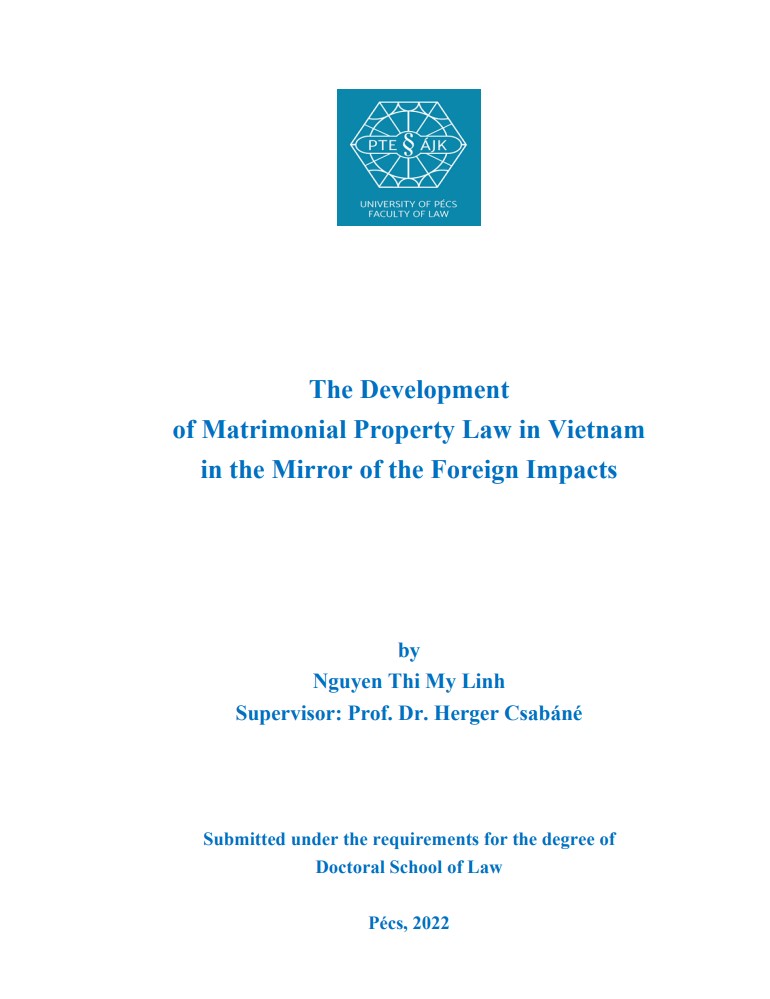The development of matrimonial property law in Vietnam in the mirror of forgein impacts
Abstract
Family law has become, to an unexpected extent, at the core of comparative law studies aimed at achieving legal unity. By examining convergence and harmonization ideas in Vietnam to law and development programs around the world, comparative family law studies are diverse and crucial. Matrimonial law in Vietnam witnessed dramatic changes under the influence from east to west by the historical Chinese (178 BC-939) and French (1858-1954) conquests. Northern Vietnam was occupied by the Communist Party in 1945 and has since advanced toward a socialist vision. Following its reunification in 1975, Vietnam implemented a variety of civil codes that were heavily influenced by those of France, Germany, and Switzerland. This demonstrates that European civil and family law has had a substantial influence on Vietnamese law, both historically and currently. Studying European laws is very beneficial because the continental European legal system is regarded as the world's largest. As a result, the overall goal of this research was to compare the development of matrimonial property law in Vietnam to Chinese, French, Soviet, European, and Hungarian family laws. The dissertation is divided into five chapters that discuss marital property in Vietnam in comparison to Chinese, French, Soviet, EU, and Hungarian family laws. Chapter 1 provides insight into the historical history of marital property in Vietnam, from traditional society to feudalism to colonialism to independence and communist growth. Chapter 1 not only examines and studies Vietnamese marital property law, but also compares it to the laws of other countries having ties to Vietnam's history at the time, such as China, France, and the Soviet Union. In Chapter 2, the dissertation examines contemporary marital property legislation, covering basic concepts and foundations for the development of various categories of marital property. Chapter 3 focuses on the legal implications for marital property when the spouses separate or one party dies, or when the marriage is annulled. The property relationship between cohabiting couples is also a problem that arises in practice and necessitates suitable legal structures, thus Chapter 4 explores this subject. Finally, Chapter 5 concisely summarizes the entire thesis work, offering remedies to existing difficulties in Vietnam through the inclusion of EU and Hungarian laws into domestic legislation or amendments to present matrimonial property law.

